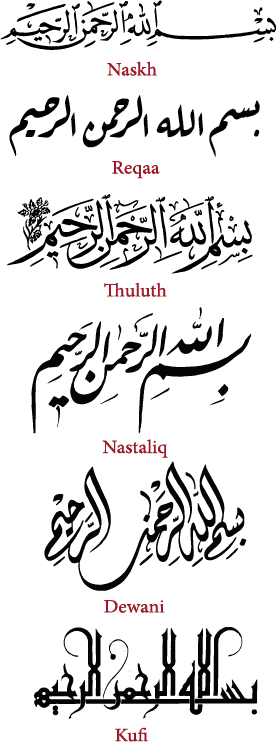Arabic Calligraphy Styles
Calligraphy is the beauty of handwriting. It is the major Islamic art that was considered to give pleasure to the eye, joy to the heart and fragrance to the soul (according to Imam Ali, the fourth Caliph) . Since the earliest writing of the Holy Quran in Makah, writers strove to produce properly correct manuscripts that were propitious for the honorable words of God. As a result of their efforts, masterpieces of the Holy Quran manuscripts survive in most of the world’s museums.
The Kufic and Naskh scripts were the two major scripts which were developed for Arabic writing. The Kufic script is the first script Arab calligraphers used to write manuscripts of the Holy Quran on parchment rolls. It developed in Kufa in Mesopotamia (Iraq) in the seventh century A .D . The Kufic script is square, bold, and squat, with straight vertical and horizontal lines meeting at ninety-degree angles which omit the diacritical marks of vowels. Because of its own features, Kufic was used for writing on stones and the walls of mosques and metals
Arabic calligraphy styles have parallels to scripts employed during the 8th century of the Islamic epoch. Certain styles are common for writing or reading , while others are favored for ornamental purposes . Arabic calligraphy comprises of a variety of scripts which are cursive with vertical extensions and geometric constructions . Some other scripts use fuller curving and linking between letters . Each Arabic calligraphy style is crucial to the purpose of the calligrapher .

